Leading the charge: How Shenzhen transformed its public transport network.
Written by Kate Zhang, Emmanuelle Rathouis, Thomas Goletz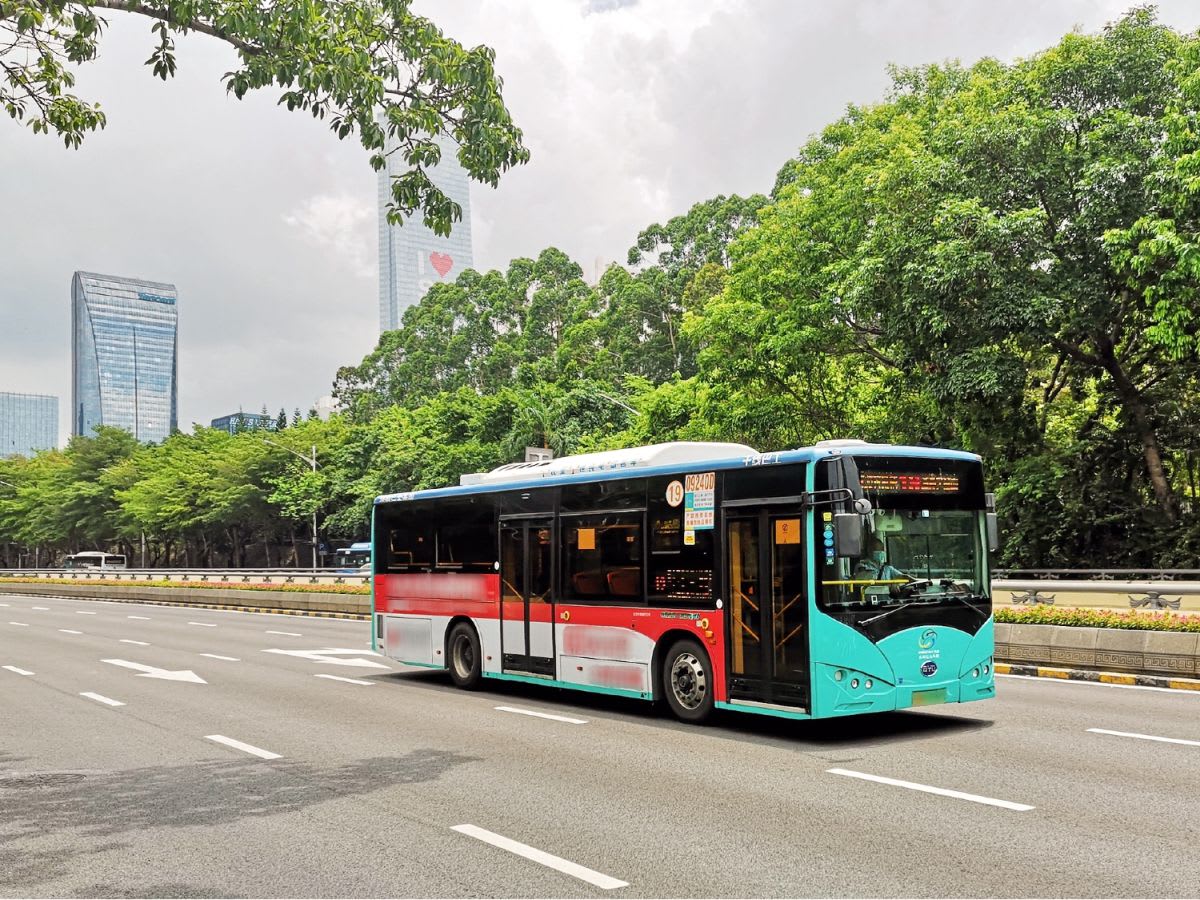
Today, many cities and local authorities in China aim to lower carbon emissions that come from public and private transportation. Clean energy has been used more widely over the past few years, and many small municipal pilot projects began testing the use of hydrogen and electric vehicles. While smart traffic management and bicycle renting schemes add to the ways we can reduce emissions, so far only a few cities worldwide went as far as restructuring their entire public transportation network into a zero emission system.
The municipality of Shenzhen, in the southern province of Guangdong, decided in 2015 to have a 100% emission free public transportation network.

In Shenzhen, 52% of the public transports system is covered by a large subway and tram network. As of April 2021, this represents 11 lines, 284 subway and 21 tram stations: 416km, servicing 5.7 million on an average day. The remaining 48% of the system is operated by taxis and more than 1,000 buses. There are now more than 12.5 million people living in Shenzhen, with around an impressive 32 million public transport journeys every month. These numbers demonstrate the huge take-up of public transportation in people’s daily commute.
This decision by the municipality meant to electrify the entire public transportation network and replace all existing buses and taxis into zero emission vehicles. Before the main bus replacement phase, Shenzhen operators started small pilot projects between 2012 and 2015, the results of which defined the city-wide roll-out. Shenzhen opted for electric buses with a large battery because they are a proven vehicle technology. This straightforward approach allows the use of the existing infrastructure for charging and maintenance, while keeping in place the existing network management. One of the main suppliers for the new vehicles is BYD, which stands for Build Your Dreams, a company headquartered in Xi’An, Shaanxi Province, but founded in Shenzhen in 2003.
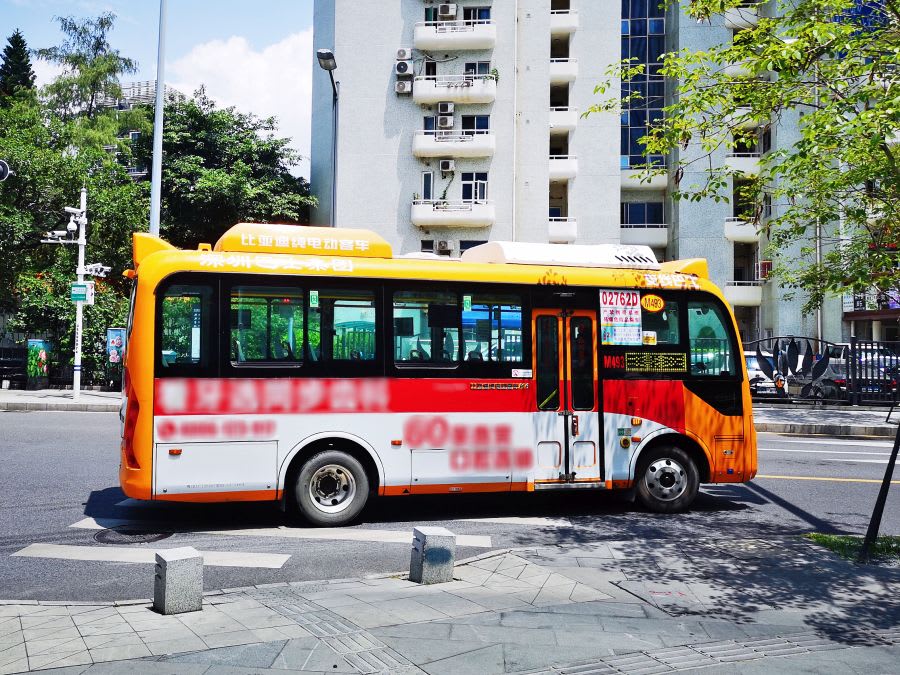
One of the key enablers for the transformation was the underlying financial model of the bus operators. Both the national government and the local government of Shenzhen provided subsidies to lower the purchase price of e-buses before the start of the overhaul process. The bus operators decided to lease the bus fleet and established a leasing company, involving major stakeholders in the city. This approach helped achieve attractive TCO (total cost of ownership) for the operators and reduce the financial risk around the radical shift towards zero emissions. Without the subsidies, the lifecycle cost of electric buses compared to diesel buses is still not economically viable. This may change if the purchase price for battery buses decreases thanks to economies of scale, or if the government decides to tax carbon emissions.

Today in Shenzhen, the three major public transportation operators run the world’s largest fully electric taxi and bus fleet. The transformation process started in 2015, and by early 2017, Shenzhen transportation operators had replaced all urban buses (more than 17,000 heavy- and medium-duty vehicles) with electric battery buses. All old taxis and buses disappeared from the streets in 2018. This scheme reduced the carbon emissions by 600,000 tons a year. Studies show that citywide the total reduction of CO2 emissions is over 22% compared to the diesel bus age.
By the end of 2018, all urban taxis in Shenzhen had been electrified. The red cabs were replaced by BYD’s model e6. The number of electric taxis in the city then reached 22,000, thus realizing pure full electrification. Taxi drivers were originally unwilling to embrace the vehicle replacement scheme, because they worried that the charging time would cut their driving time short. The e-Taxi requires one to two hours to charge, so the drivers actually need to find the charging pile two hours before their next shift. Taxi drivers say they now all feel the new e-Taxi is more comfortable to drive. The cars are heavier than they used to be because of the added weight of the battery packs, so they found the braking distance is now a little longer. The drivers say they adapted quickly to their new vehicles to keep driving safely: the cars slow down as soon as the driver takes their foot off the accelerator but will stop as you’d expect when they need an emergency stop. E-taxis can in theory drive for 300km once they are fully charged, but this will be reduced to 160-200km if there are traffic jams or when they use air-conditioning. Such range is usually sufficient for urban passengers, who will opt for the High Speed Rail, which is now well developed in China, for long distance and inter-city trips.
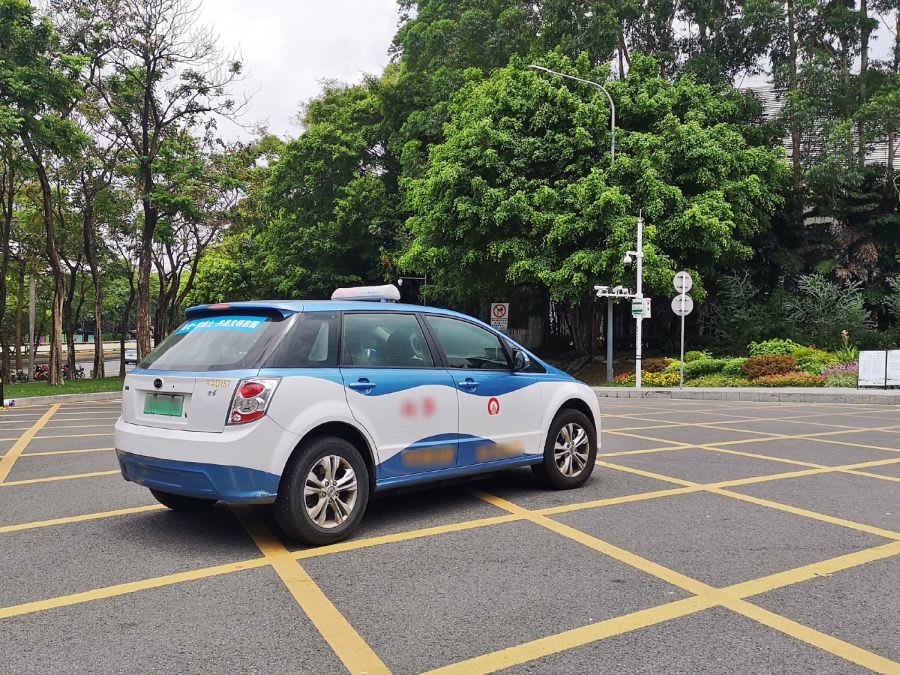
One of the most known e-buses in Shenzhen is BYD’s K8 bus. Generally, their drivers prefer battery buses due to the lower centre of gravity. One of the drivers we spoke to said that the new battery buses are “like sports cars” compared to their former vehicles.
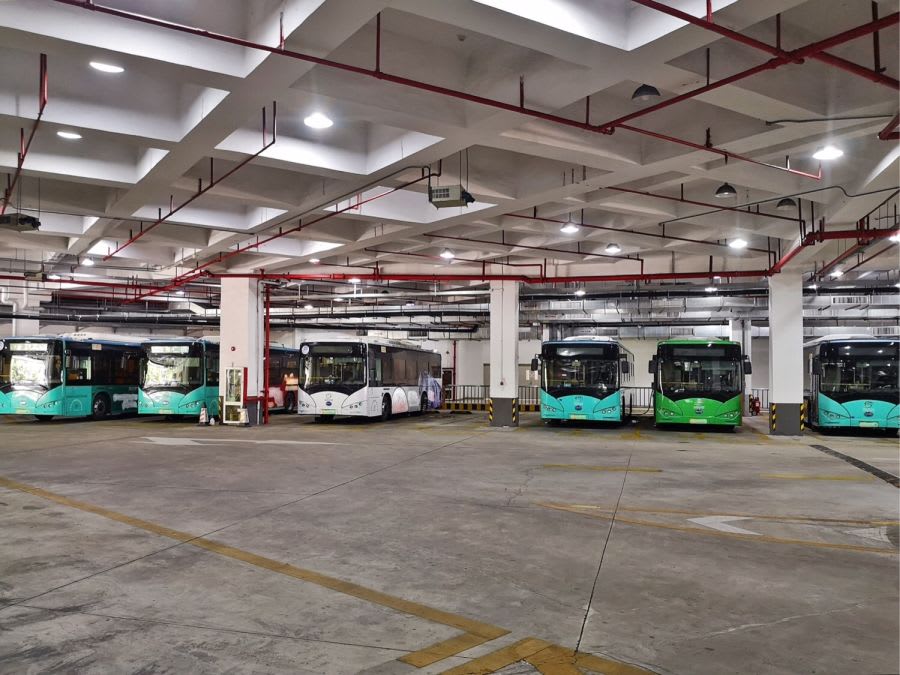
The lower centre of gravity allows for a smoother ride, an easier steer around corners and reduces the wobbling around the longitudinal axis of the bus. The battery can drive, in theory, around 250km, although this is contingent on the use of the air conditioning system. The buses normally cover 180-200km per day. The charging time is between two to 4-5 hours, depending on the power of the available EV chargers. Practically, this means that the buses can operate the whole day and will be recharged during breaks or overnight.

Nowadays people feel nostalgic when one of the very few diesel engine buses, those that remain from out-of-town routes, roars through the streets of Shenzhen. It is however hard to imagine how citizens would accept those noisy and carbon emitting vehicles once again on the roads.
While the results contribute, in an astonishing way, to the quality of life in the city, Shenzhen people got used to it very fast. Shenzhen is on its way to become a city entirely driven by electric vehicles.

When traveling from Hong Kong to Shenzhen, one of first impressions is how quiet the traffic in Shenzhen is. While in Hong Kong, cars and in particular buses, generate an endless source of noise, the traffic in Shenzhen is much quieter. Shenzhen people already got used to it, so much so that it is construction noise rather than traffic noise, that comes to their mind when they’re asked about the difference between the two neighbouring cities. The same goes for the emissions. In Hong Kong you can smell emissions from cars, trucks as well as from the diesel-powered buses. You won’t find this type of odour issues in Shenzhen much.
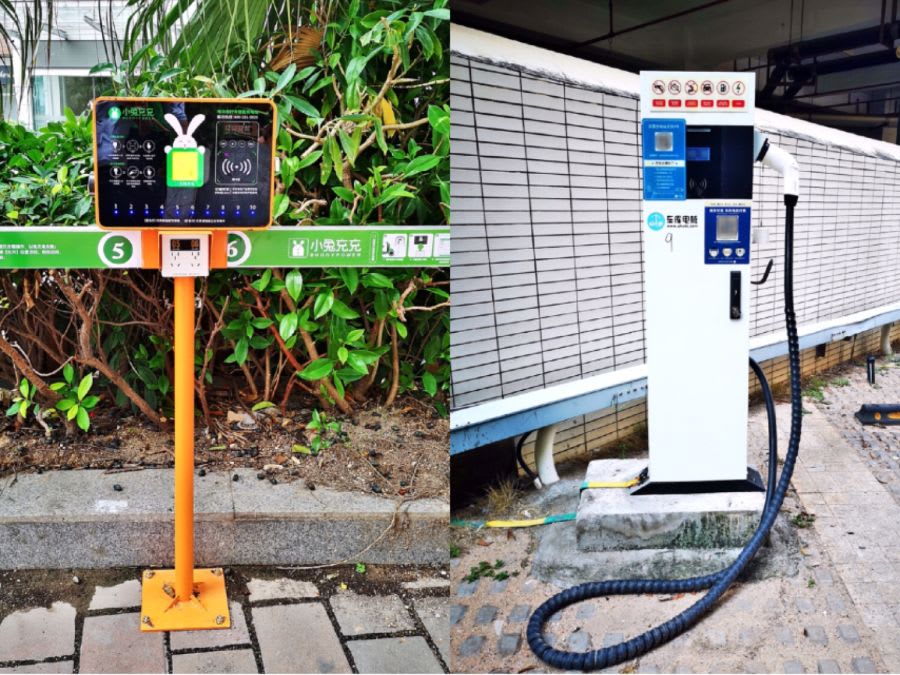
The electrification of the public transportation has improved the quality of life in Shenzhen in several ways. Noise and pollution have been significantly reduced, emissions in the streets have been lowered dramatically. Unknown by most of its citizens, Shenzhen is today the global model city for the transition to zero emissions public transport, achieved in only a few years. The full transformation had been initiated and enabled by the local government, with the backing of the national government. Subsidies and the involvement of all stakeholders made it possible for the bus operators to complete the electrification process.
Consequently, Shenzhen has become the largest field test for battery vehicle engineering and manufacturing companies like BYD. Battery recycling and their disposal may the next challenge Shenzhen will need to resolve, and the city is in a good position to do so. Manufacturing and operating such a large number of battery-powered vehicles has provided them with first-hand experience and the know-how to develop technologies and products to the next level.
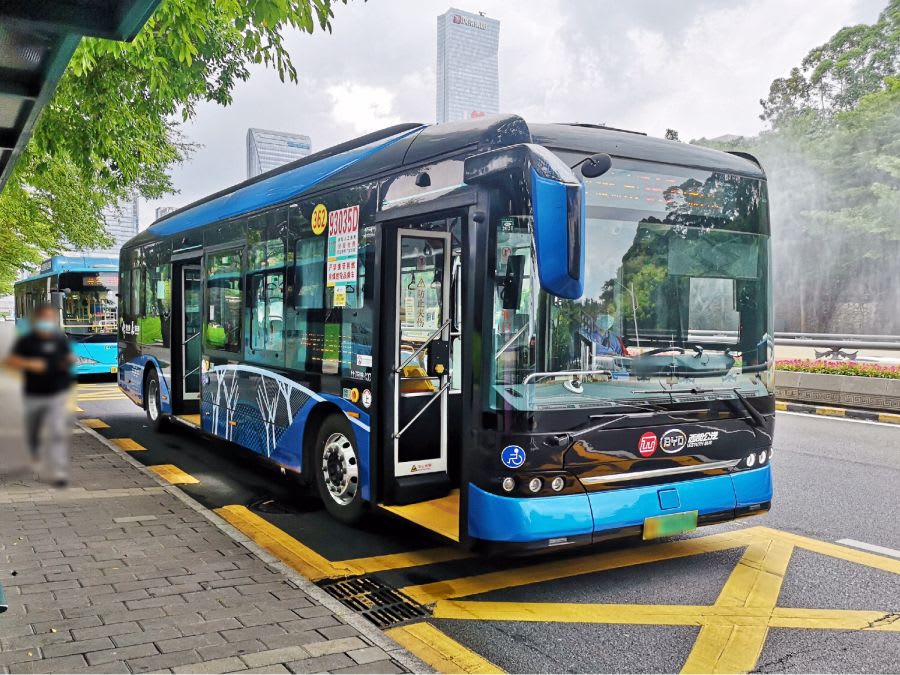
References:
• https://www.iimedia.cn/c1061/70685.html
• https://www.d1ev.com/news/qiye/40291
• http://www.sznews.com/news/content/2019-12/26/content_22733137.htm
• Mao, Feng & Li, Zhiheng & Zhang, Kai. (2020). Carbon dioxide emissions estimation of conventional diesel buses electrification: A well-to-well analysis in Shenzhen, China. Journal of Cleaner Production. 277. 123048. 10.1016/j.jclepro.2020.123048.
CREDITS:
Kate Zhang, Meet Hydrogen China
Emmanuelle Rathouis, Meet Hydrogen China
Thomas Goletz, Meet Hydrogen
All PHOTOS:
MEET HYDROGEN TEAM ( Paulina Bracher, Kate Zhang)